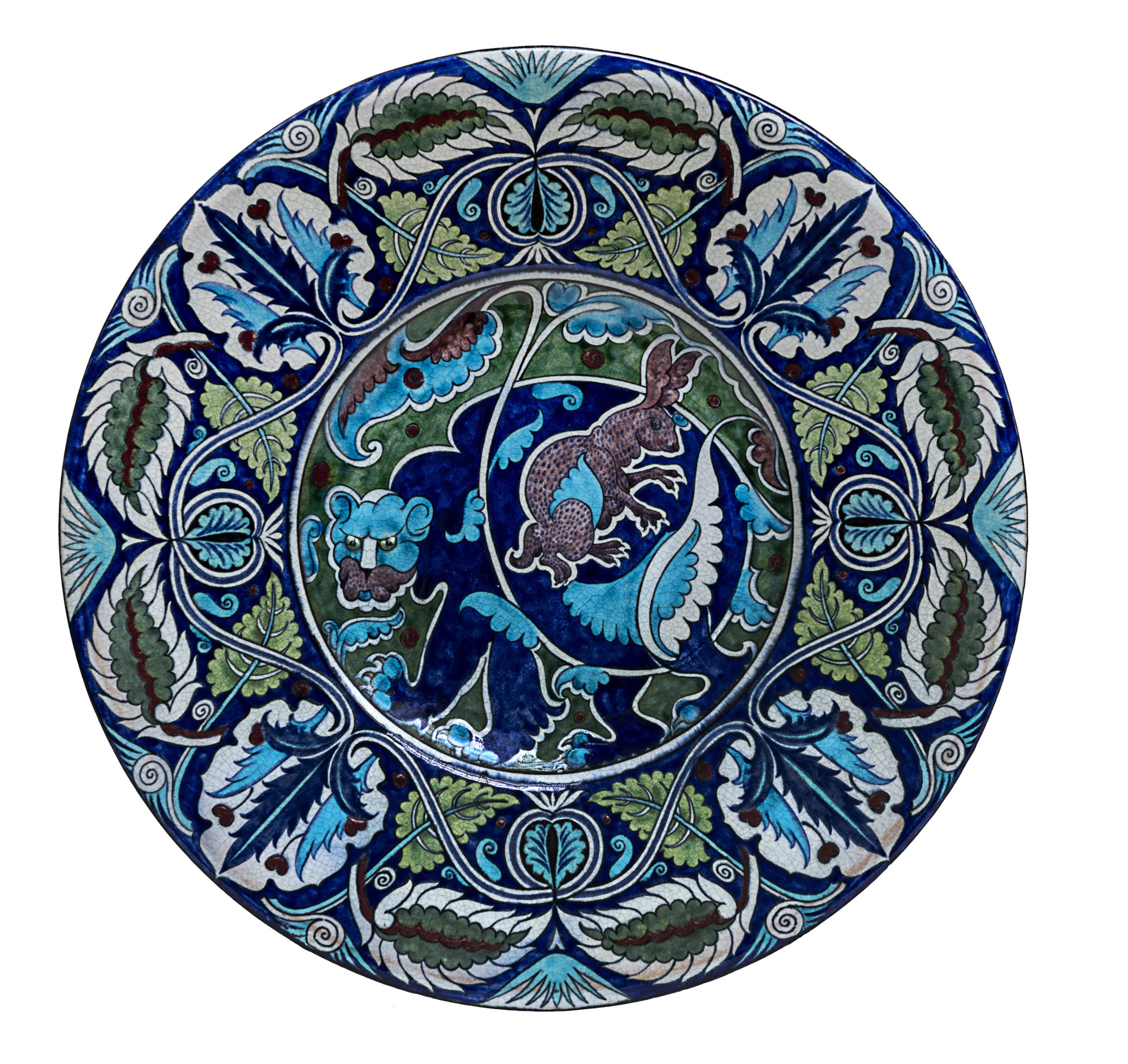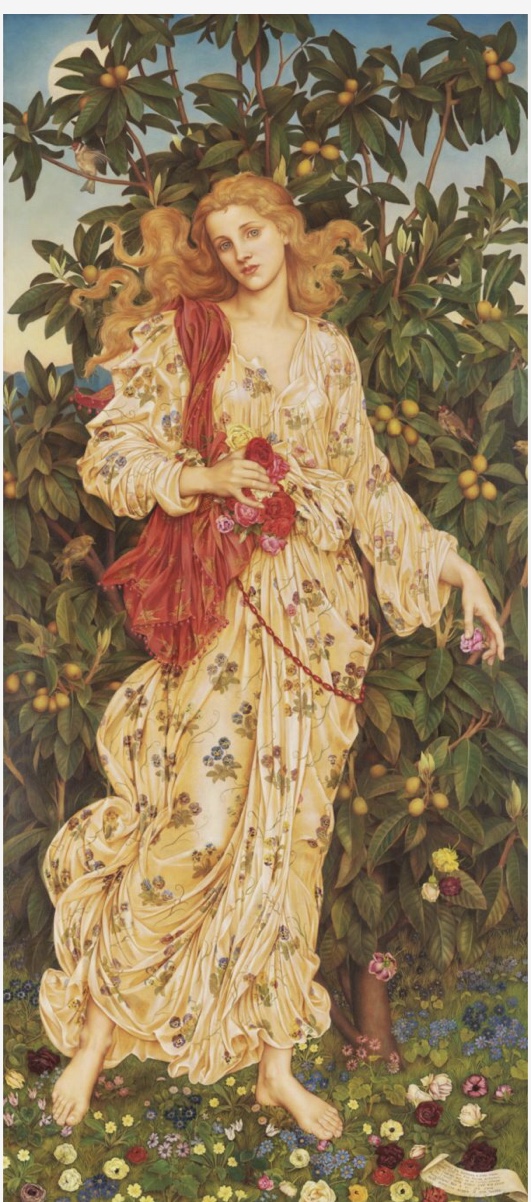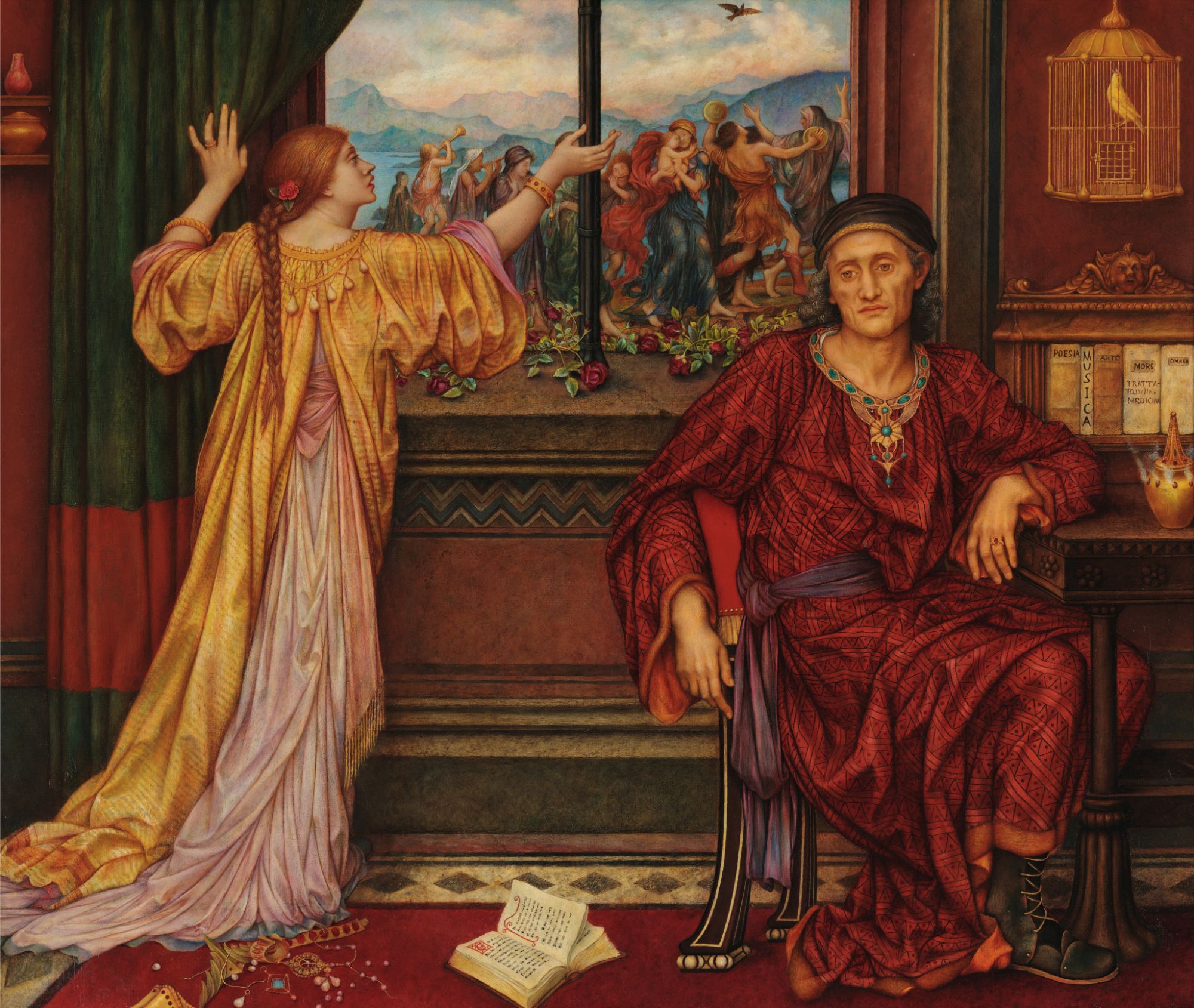About the Exhibition
Cromwell Place
4 Cromwell Place
London
SW7 2JE
United Kingdom
Opening information
Wednesday — Saturday:
11.00am — 7.00pm
Sunday:
11.00am — 4.00pm
In January 2024, masterpieces from the blockbuster exhibition ‘A Marriage of Arts and Crafts: Evelyn and William De Morgan’ returns to the UK from its USA tour. This exhibition was the first major retrospective of Pre-Raphaelite painter Evelyn Pickering De Morgan (1855-1919) and her husband, stained glass and pottery designer William Frend De Morgan (1839-1917) to travel internationally. There was much critical acclaim for the exhibition, with Fine Art Connoisseur Magazine hailing it ‘remarkable’.
To welcome the artworks back to the UK and celebrate the success of these Victorian artworks with an American audience, the highlights from the exhibition will go on display at Cromwell Place.
The exhibition will demonstrate the unique artistic partnership the De Morgans’ marriage represented.
Married in 1887, the De Morgans’ artwork spanned influential artistic circles of the era: Pre-Raphaelite, Arts and Crafts, and Aesthetic Movement. Their shared political and social views connected them with groups beyond the art world, including socialists, suffragists, and pacifists, making their impact on Victorian society broad and significant.
However, they’ve received limited recognition, with William’s craft focus and Evelyn’s gender contributing to this oversight. Evelyn, often labeled a disciple of Edward Burne-Jones, had little professional connection with him. This exhibition offers a comprehensive view of their cultural milieu, highlighting evolving attitudes toward Victorian marriage as a working partnership.

William De Morgan, born in 1839, hailed from a family of notable figures: his mother, Sophia, was an activist and spiritualist, while his father, Augustus, was a renowned mathematician. Despite his mathematical aptitude, William’s passion lay in the arts. Initially aspiring to be a painter, he joined the Royal Academy Schools in 1859, where he crossed paths with Pre-Raphaelite luminaries. Around 1863, he met William Morris, co-founder of Morris, Marshall, Faulkner & Co., known for their Gothic Revival church interiors and stained glass.
Inspired by Morris’s work, William De Morgan ventured into stained glass design, refining firing techniques. In 1869, he launched his pottery business, focusing on both production and design. His creations melded influences like Pre-Raphaelite medievalism, Italian Renaissance maiolica, and Middle Eastern lustreware, adorned with whimsical anthropomorphic creatures born from his imagination. Despite his inventive prowess, he struggled as a businessman, and the pottery remained financially unsustainable. In 1907, he made the tough decision to shutter the business, possibly with support from his wife, Evelyn, during the early years of their marriage.
His ‘Bear and Hare Plate’ (right) was created around the same time he met and married Evelyn Pickering, whilst he had premises in Merton Abbey (South West London), near his friend William Morris. It demonstrates his life-long interest in Middle Eastern decorative arts, ceramics, and design.


Evelyn Pickering De Morgan, born in 1855, grew up in an affluent family with legal and aristocratic ties. Despite family opposition, she was determined to pursue art and received crucial support from her uncle, Pre-Raphaelite painter John Roddam Spencer Stanhope. In 1873, she gained admission to the Slade School of Art, a rare opportunity for female artists. Here, her mature style began to take shape, influenced by intensive figure drawing and exposure to the early Italian Renaissance during continental travels. She meticulously studied and emulated works like Sandro Botticelli’s Primavera, evident in pieces like Flora (1894) (left).
Evelyn’s exhibiting career commenced in 1876 at the Dudley Gallery, a haven for emerging artists. A significant turning point occurred in 1877 when she was one of only two female artists invited to showcase her work at the avant-garde Grosvenor Gallery, a testament to her burgeoning professional success.
By the turn of the century, William’s pottery business was in financial difficulty and it eventually closed in 1907. He became a best-selling author, having turned his hand to writing to satisfy his creative needs. This left Evelyn free to paint subjects close to her heart, rather than those which would be commercially successful. The Gilded Cage (below) was painted in about 1908. It shows a woman trapped in a marriage of convenience with a very unhappy husband. It is not biographical, but represents the De Morgans’ shared view that women were trapped in a patriarchal society.

The De Morgans Shared Passions
In 1883 William and Evelyn, who had for the last decade been travelling on parallel but separate tracks, came together. In addition to art, they were particularly committed to three causes — Victorian spiritualism, the early efforts of the women’s suffragist movement, and pacifism in response to the overwhelming devastation of the First World War. In The Grey Sisters (1884), inspired by a story German literature, the personified figures want, debt and need cannot get through the individual’s barrier; only care can, demonstrating De Morgan’s ongoing commitment to pacifism.
Cromwell Place
Cromwell Place, located in the heart of South Kensington, is an innovative and dynamic cultural hub comprising a row of five townhouses. Once the studio home of Sir John Lavery (1856–1941), a prominent Irish portrait and landscape painter known for his elegant and evocative depictions of society figures and historical events. Renowned for his skillful use of light and color, Lavery’s works continue to be celebrated for their timeless beauty and artistic mastery. Cromwell Place is a historic space re-envisaged as a modern, light and airy gallery space, boasting a number of historic gallery spaces, a changing programme of exhibitions, and the inviting Cromwell Place Café.

Events
Curator Tours
Fridays and Saturdays, 12pm
Private Tours
We are pleased to welcome your group to a private view of the De Morgan exhibition with exhibition curator, Sarah Hardy.
Please contact Sarah directly to organise.
sarah@demorgan.org.uk
Donate
We rely on your generous support to care for and display this wonderful collection


